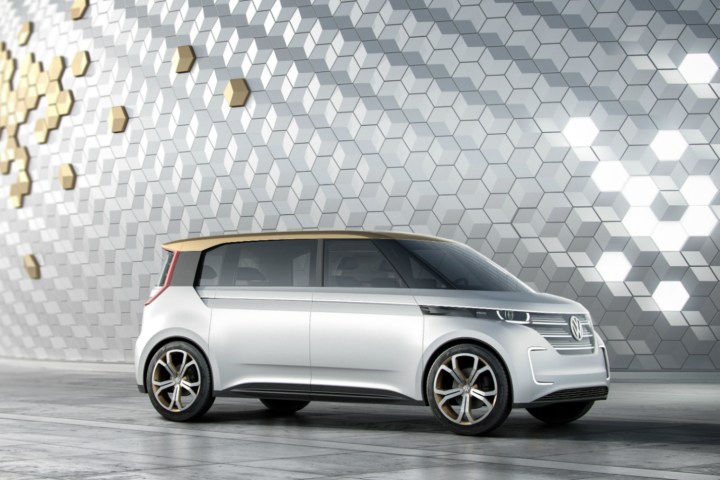
The concept’s design pays homage to the iconic Bus, which was introduced in 1950 and axed just a few short years ago. Much like the Bus was based on the original Beetle, the Budd-e — a name that most likely won’t be retained for production — will share its bones with the production version of the I.D. concept shown a few months ago in Paris. Power will be provided by a rear-mounted electric motor programmed to zap the back wheels with 163 horsepower and upcoming advances in battery technology will allow it to offer up to 310 miles of range. All-wheel drive will be offered at an extra cost.
Insiders say the stylish sheet metal will make the jump from the show floor to dealerships with only minor tweaks. The van will stretch about 192 inches from bumper to bumper, and it will offer one of the most spacious interiors in its segment thanks to clever packaging solutions made possible by the compact electric drivetrain. For that reason, a gasoline-powered variant of the Budd-e isn’t in the works.
Engineers are developing the Budd-e as a fun, family-focused model with space for up to seven passengers spread out over three rows of seats. However, it’s not difficult to imagine a work-oriented version of the van aimed at businesses big and small. Volkswagen has been toying with the idea of returning to the commercial vehicles segment in the United States for a few years, so the Budd-e might spearhead the project.
The Bus was, for all intents and purposes, an economy car, but the Budd-e will be positioned a little bit higher up on the market. Notably, Autocar learned that well-equipped models will boast high-definition screens for the instrument cluster and the infotainment system, an advanced heads-up display, and the semi-autonomous technology that Volkswagen is developing. All of these features will be hallmarks of future electric Volkswagen models.
Volkswagen will introduce the production version of the I.D. concept in 2020. The Budd-e could arrive about a year later if the rumors are accurate.
Editors' Recommendations
- 2022 Volkswagen ID. Buzz first drive review: The iconic hippie hauler goes electric
- Volkswagen ID. Buzz prototype first drive: Here comes your van
- Argo AI puts a high-tech spin on Volkswagen’s retro ID.Buzz van
- Ubisoft’s digital E3-style showcase will stream on July 12
- Can a vintage Volkswagen Bus be quick and silent? You bet, if it’s electric




